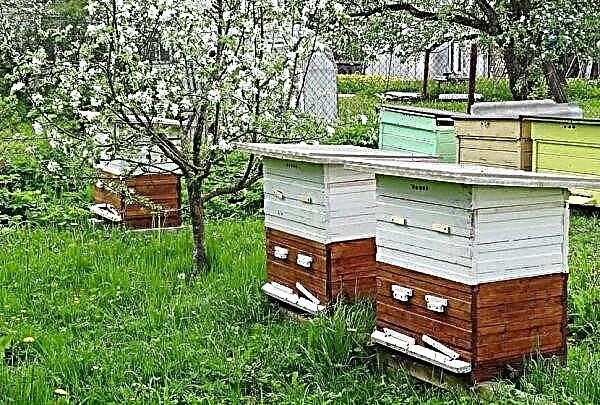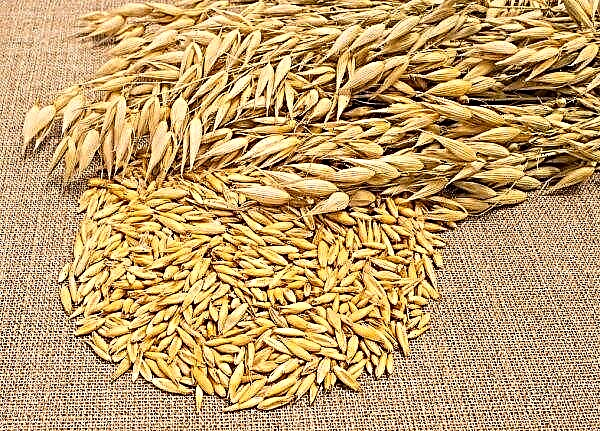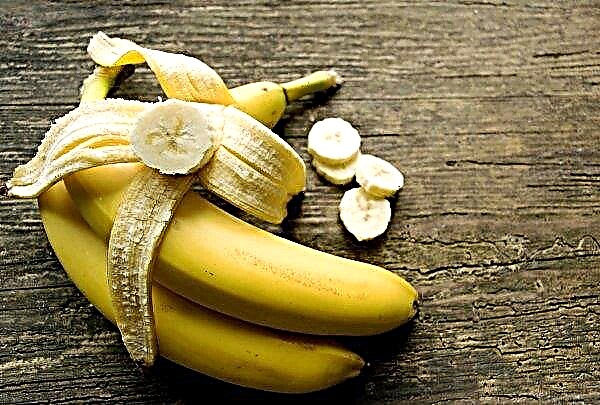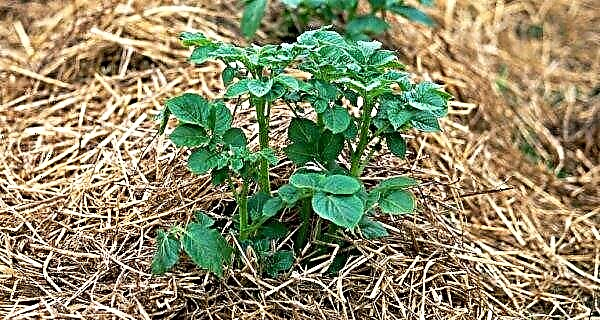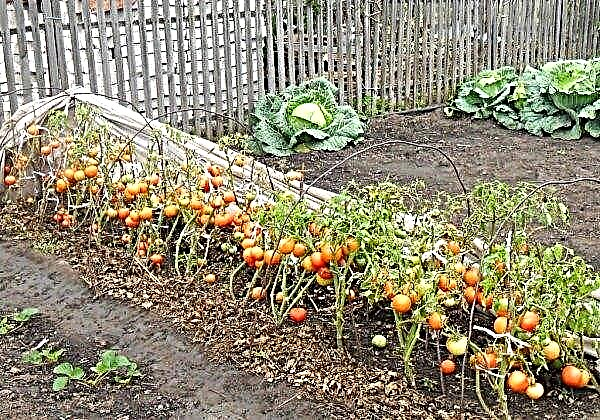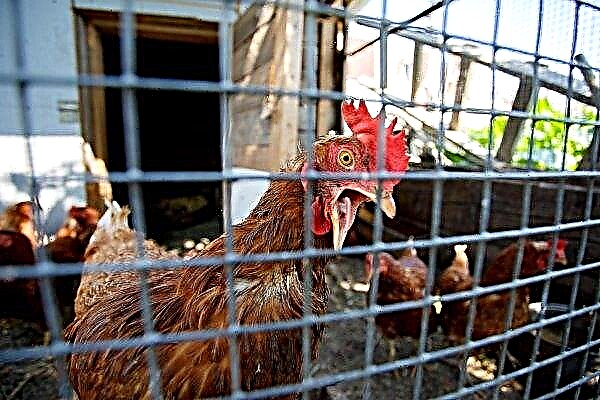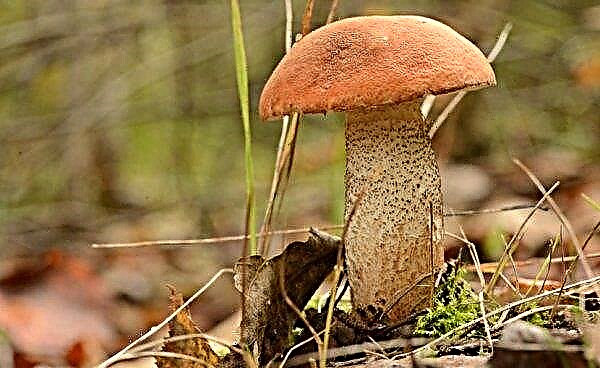Celery has gained great popularity among lovers of spicy salads and side dishes for various dishes. In order to grow this vegetable at home in the winter, you need to know how to grow it in a pot, how to care for it, in which soil it is better to plant and in what conditions to keep. You will learn about these and other details in the article.
Celery Description
Celery belongs to the Umbrella family. Its greens and root are used in cooking. The homeland of this product is the Mediterranean countries. In ancient Greece, Rome, and Egypt, this vegetable was used as a medicinal substance and only in the Middle Ages it was started to be eaten. This is a universal vegetable, since all its parts are used in cooking. Greens and roots are added to various salads, as well as meat dishes. Celery is also a two-year-old plant with a height of 80–100 cm.
Did you know? Celery root is not only a tasty and healthy product for cooking various dishes, but also an aphrodisiac.
This vegetable is divided into three varieties:
- Root. It forms a round shape of a large root crop with a diameter of about 10 cm.

- Sheet. It has delicate small leaves with small petioles.

- Petiole. He has big leaves. Has small seeds of gray color.

Celery is a very aromatic vegetable, and the taste is slightly bitter.
What is the best way to grow celery on a windowsill
Like any root vegetables, celery can be grown not only in the garden, but also at home on the windowsill. Landing is best done in spring or late summer.
There are three ways to grow this vegetable:
- Petioles. They can be purchased at the store, while greens must be cut and used in cooking. The stump should be left and sprouted a little, then planted. It should be free from defects, rot, etc.
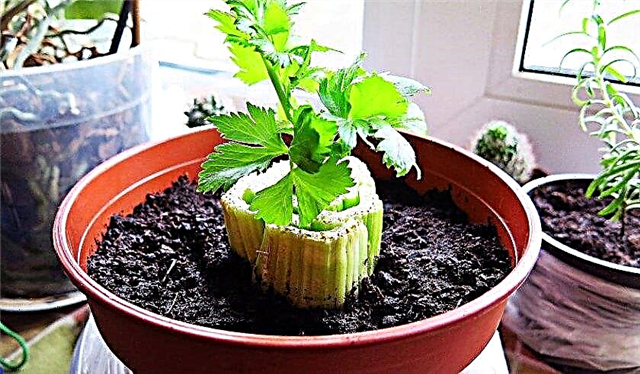
- Root vegetable. Root crops must be purchased at a store or at the bazaar. This method is simple, but it has a minus, because after 2-3 months it is necessary to plant a new plant.
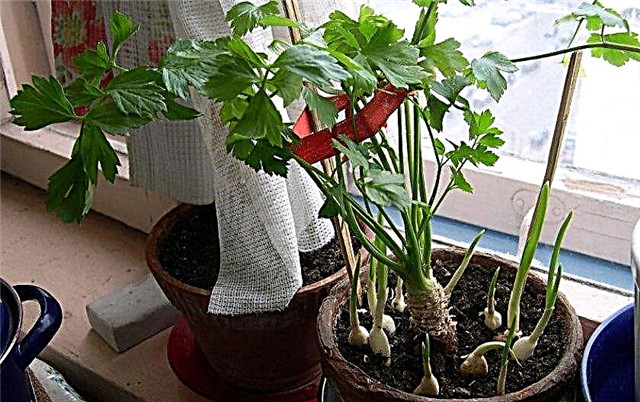
- Seeds. This is a laborious method, but at the same time growing celery in this way allows you to get a good and tasty vegetable for a long time. Based on this, planting with seeds can be considered the best way to grow celery at home, because by sowing seeds in mid-autumn, you can get the first greens already in early winter.

Lighting
When growing this vegetable in any way it is necessary to provide it with good lighting. To do this, put the container with the plant in a well-lit place, best in the western part of the room. In winter, the vegetable must be provided with additional lighting using fluorescent lamps. In order to get a juicy, tasty product on the windowsill, you need good lighting, daylight hours should last 12-15 hours.
In spring, the plant receives the necessary amount of light, so the need for additional lighting is not needed. To reflect light from the window, you can use foil. Also, to avoid distortion of the sprouts, the pot with the plant must be rotated daily.
Temperature and humidity for a good harvest
The optimum temperature for growing celery is considered to be +18 ... + 20 ° С. In winter, you should not keep the container with the plant on the windowsill, it is best to move it to a warm, well-lit place. This vegetable loves moisture, but in winter it is worth moderating to moisten the soil. For irrigation, it is best to use settled water, it should be at room temperature.
What soil to plant celery in
To get a good crop, you must carefully approach the choice of soil and its composition. It is best to purchase a ready-made substrate in specialized stores than to take it from the garden, as it may contain bacteria or pests. The soil for growing this vegetable should be loose, it should pass air and water well.
Also, the soil can be prepared independently. To do this, take soddy soil, peat, humus in a ratio of 1: 1: 1 and mix. Do not forget about good fertilizer, for this you need to dilute 1 tbsp in 10 liters of water. l nitrofoski or nitroammofoski.
Choosing a container for planting and growing on a windowsill
The choice of capacity for planting is an integral part of the whole process of celery cultivation, because its capacity, development and how the crop will depend on what capacity the plant will be in. For this vegetable, it is best to choose a wide container with a not deep bottom. For this, pots for indoor plants, plastic pots or made of clay, or containers, are suitable.
Important! Wooden boxes should not be used when growing celery at home, as they are difficult to disinfect, and they also absorb moisture well, which can lead to fungal infections.
Features of planting celery
Celery can be planted with petioles, root vegetables, and also sow seeds. Each of this method has several nuances in the planting process, which should be observed.
Planting celery in a bowl
Consider planting celery in a container with the help of petioles and root crops.
First way:
- You need to buy a vegetable, separate the top from the bottom.
- Put the root part in a shallow container with water, while the part with the roots should be at the bottom.
- This container must be placed in a warm, well-lit place, but at the same time direct sunlight should not fall on the plant.
- Every day you need to change the water for fresh.
- After a week, the tops will dry out, and new sprouts will start to break out of them, at the same time the roots will begin to grow.
- Then you should prepare a pot or box, fill it with expanded clay drainage and fertile soil.
- Next, you need to moisten the soil and plant a stalk with sprouted roots. It is worth deepening the whole petiole, only green shoots should remain on the surface.
For this you need:
- Purchase a root crop or dig it out on your site.
- Prepare in advance the soil for planting and the container in which you will plant the vegetable.
- It is necessary to plant the root crop in such a way that its main part is above the soil.
- Then you need to compact the soil and pour it abundantly.
- Next, you need to place the plant in a warm, sunny part of the room.
- After 14 days, the first crop will appear.

How to grow celery seedlings
Celery is a plant with a long growing season, which is why it is best grown by the seedling method.
In order to grow this culture using this method, you must:
- First you need to select the seeds, they must be free of defects.
- Then the seeds are placed for 3 days in a container with warm water.
- Then it is necessary to put a damp cloth in a warm place, put seeds on it and wait for germination (this process lasts about 7 days).
- 7 days after the seeds germinate, they must be sown in a container with loose, well-permeable air and moisture, fertile soil, while the row-spacings should be 8 cm wide, top with 1 cm soil.
- After the first shoots appear and there will be 2-3 leaflets on them, it is necessary to carry out the next dive process, but this is not necessary, since it can simply be thinned out.
Important! The temperature when growing seedlings should be + 20 ° C.
Celery Care
Like any plants, celery needs care. It consists in timely watering and fertilizing to improve the growth and comfort of the vegetable, periodically loosening the soil and thinning seedlings.
Thinning and soil care
Often when planting celery in a seedling method, it happens that several seeds fall into one furrow, later on when growing they will interfere with each other, which is why thinning is necessary. This process can be carried out independently, for this it is necessary to remove the side shoots, large and yellowed leaves. Also, care includes weeding and loosening the soil under celery, these processes will enrich the plant with oxygen necessary for life.
Also, care includes weeding and loosening the soil under celery, these processes will enrich the plant with oxygen necessary for life.
How to water and how to fertilize celery
Watering must be carried out regularly. On hot days, you need to water this vegetable every day directly under the roots. The soil should be constantly moist, but there should be no stagnation of water in the holes. It is also necessary to carry out timely and proper top dressing. The first time fertilizer is applied 20 days after transplanting seedlings, mineral fertilizers are used for this. For each landing tank, add 20 g of ammonium nitrate and 15 g of superphosphate.
Did you know? In ancient Greece, a celery wreath was awarded to the winners of the Nemean Games.
Dry fertilizer must be applied before watering. You can also prepare the fertilizer yourself. To do this, take finely chopped grass and dilute it in water in a ratio of 1: 3. After 3 weeks, top dressing is repeated in the same way. For large root crops, it is necessary to exclude nitrogen fertilizers, but at the same time increase potash.
Harvesting and storage of celery
Compliance with the rules for caring for the plant will result in a rich, high-quality crop. As a rule, celery stalks are collected in early or mid-autumn. Before you dig up the stalk, make sure that a large outlet has formed on it.
Cleaning process:
- Use a garden pitchfork and scoop to gently extract celery with roots.
- After removal, leave it in a humid environment.
- Deepen the roots of the plant in the sand, after wetting it.
- Dig the soil regularly so that the petioles do not rot from moisture.
If you follow these brief rules, you can save the sprout of celery right up to spring. Remember that in order for the vegetable to not deteriorate during further storage, it is necessary to cut leaves from it and leave only medium-sized petioles. Pay attention to the condition of the petioles: they should have a smooth surface without flaws, without voids. You can check the plant for voids in the petiole in this way: tap it, if the sound is sonorous, then the inside has hollow fragments.
Also check if the vegetable is rotten by clicking on the top of the plant. To keep the root crop fresh and tasty after cutting, wrap it in cling film and leave it in the refrigerator for freezing. This method of storage allows the vegetable not to lose astringency and spiciness in taste. If you want to keep only the celery greens, you should dry it. To do this, cut the greens, rinse it, wrap in foil. Leave the package in the refrigerator. After a month, transfer to a paper bag. A method for storing celery in ice molds is also widespread. For this, the freshest leaves are selected, cut into small pieces, laid in molds and filled with water. Keep it chopped in a freezer. Celery is a storehouse of vitamins, minerals and trace elements. In addition, it is a component of many delicious dishes. Knowing how to grow it on a windowsill and how to care for it at home, you can use fresh herbs in winter.
A method for storing celery in ice molds is also widespread. For this, the freshest leaves are selected, cut into small pieces, laid in molds and filled with water. Keep it chopped in a freezer. Celery is a storehouse of vitamins, minerals and trace elements. In addition, it is a component of many delicious dishes. Knowing how to grow it on a windowsill and how to care for it at home, you can use fresh herbs in winter.







